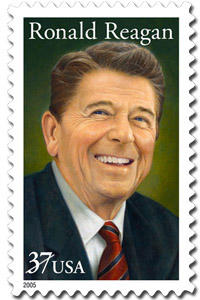Thirty-seven years ago today, at 10:56 p.m. EDT, Astronaut Neil Armstrong became the first human to step foot on the moon. It was 9:56 p.m. Central Daylight Time in Bloomington, Minnesota, where I watched the blurry television transmission live on our family TV. I had spent the previous few years following the space program during my grade school years, assembling a model of the Apollo spacecraft, playing with my G.I. Joe in his astronaut uniform and Mercury space capsule, reading everything I could find about the Mercury, Gemini, and Apollo programs, and of course, watching Star Trek.
Unfortunately, little will be said today about President John F. Kennedy's vision in 1961 of "landing a man on the moon and returning him safely to Earth," or the out-of-this-world technology that quickly brought us spin-off technology from Fisher Space Pens to mass-produced computers in our automobiles more powerful than the computers that got seven manned Apollo missions to the moon and back.
Even in the midst of unprecedented political and cultural turmoil, the U.S. space program is one of mankind's greatest achievements. It inspired a generation to pursue careers in math and science, and invent everyday technology that could only have been science fiction thirty-seven years ago today.
HISTORY
Thursday, July 20, 2006
Subscribe to:
Post Comments (Atom)




No comments:
Post a Comment